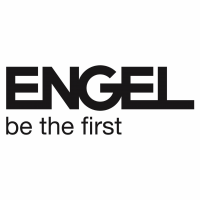Quantifying And Optimizing The Value Of Llms Within The Enterprise
A better understanding of an LLM’s semantic hub could assist researchers forestall this language interference, he says. Traditional ML models are efficient in domains where structured information is ample and tasks are narrowly defined. On the other hand, LLMs shine in text-heavy functions, leveraging their huge data base to handle nuanced challenges.
- This includes knowledge entry, scheduling, easy copywriting, and preliminary customer support interactions.
- They discovered that they could predictably change the model outputs, despite the fact that these outputs have been in different languages.
- From producing text to answering questions, LLMs are becoming an integral part of many purposes.
- The first examines a company-wide knowledge assistant dealing with fixed site visitors throughout time zones.
- By analyzing social media posts, buyer critiques, and other textual data, these fashions can gauge public sentiment on varied matters.
- “How do you maximally share every time possible but also enable languages to have some language-specific processing mechanisms?
Neuroscientists consider the human brain has a “semantic hub” within the anterior temporal lobe that integrates semantic information from varied modalities, like visual information and tactile inputs. This semantic hub is related to modality-specific “spokes” that route info to the hub. The MIT researchers discovered that LLMs use an analogous mechanism by abstractly processing information from numerous modalities in a central, generalized method. For instance, a model that has English as its dominant language would depend on English as a central medium to process inputs in Japanese or reason about arithmetic, computer code, and so on. Moreover, the researchers reveal that they will intervene in a model’s semantic hub through the use of text in the model’s dominant language to change its outputs, even when the mannequin is processing knowledge in different languages. As developers achieve a deeper understanding of neural network architectures and training methodologies, these fashions will turn into higher at handling complex duties and providing precise answers.
They have achieved very spectacular performance, but we’ve little or no information about their inside working mechanisms. Explore the IBM library of basis fashions in the IBM watsonx portfolio to scale generative AI for your business with confidence. Be Taught tips on how to regularly push teams to enhance mannequin efficiency and outpace the competition by utilizing the latest AI techniques and infrastructure. Explore the IBM library of basis models within the watsonx portfolio to scale generative AI for your business with confidence. Learn about a new class of flexible, reusable AI models that can unlock new income, reduce prices and improve productiveness, then use our guidebook to dive deeper. Moreover, the capability of LLMs to know context and nuances equips them to filter out irrelevant information, focusing only on pertinent particulars.

Why Channel Companion In Actual Estate Is Important For Property Sales Progress
While the course supplies are free, they provide a radical understanding of NLP models and their applications. Quick.ai provides a free course that, whereas not solely focused on LLMs, covers deep studying techniques relevant to them. The course is designed for coders with some programming background and contains sensible assignments. Though it doesn’t focus exclusively on LLMs, it covers essential concepts and strategies used in constructing and understanding large models. ROUGE is extensively used in evaluating LLM summarization models because of its simplicity and effectiveness in measuring content overlap, making it suitable for both extractive and abstractive summarization duties. Nonetheless, it doesn’t account for the fluency or readability of the generated summary, which can be a limitation.
LLMs are one of many instruments within the NLP toolkit, but NLP also entails rule-based methods, statistical methods, and traditional machine learning approaches. These fashions are based totally on Transformer architectures, such as the generative pre-trained transformer (GPT). An LLM comprises a quantity of layers of neural networks with tunable parameters, enhanced by an consideration mechanism that focuses on particular elements of the dataset. Whereas Digital Logistics Solutions early language models may only course of text, modern massive language models now carry out extremely diverse tasks on various kinds of data. For occasion, LLMs can perceive many languages, generate pc code, clear up math problems, or answer questions about photographs and audio.
Learn How To Use Llm For Summarization Duties With Projectpro!
LLMs are a subset of NLP models designed to process llm structure and generate human-like text using massive datasets and neural network architectures. These fashions excel in tasks requiring understanding and generation of pure language, such as textual content completion, translation, and summarization. A massive language mannequin is a type of artificial intelligence algorithm that applies neural network strategies with lots of parameters to course of and understand human languages or text using self-supervised learning techniques. Tasks like textual content technology, machine translation, summary writing, image era from texts, machine coding, chat-bots, or Conversational AI are applications of the Giant Language Mannequin. As Quickly As trained on this coaching data, LLMs can generate text by autonomously predicting the subsequent word primarily based on the enter they receive, and drawing on the patterns and knowledge they’ve acquired. The result is coherent and contextually related language generation that might be harnessed for a variety of NLU and content material technology tasks.

Audiovisual Training
The core of their performance lies in the intricate patterns and relationships they study from various language information throughout coaching. LLMs encompass multiple layers, including feedforward layers, embedding layers, and attention layers. They employ attention mechanisms, like self-attention, to weigh the importance of various tokens in a sequence, allowing the model to seize dependencies and relationships. Astra DB is a cloud native NoSQL database designed for constructing real-time AI functions. With built-in vector search capabilities, it allows AI fashions to retrieve related knowledge shortly, making it perfect for generative AI, natural language processing, and recommendation methods. Creating a large language model (LLM) from scratch entails gathering huge quantities of textual content information, constructing a neural community (usually based mostly on transformers), and coaching it on highly effective hardware like GPUs or TPUs.
The model assigns a illustration to every token, which allows it to explore the relationships between tokens and generate the following word in a sequence. In the case of pictures or audio, these tokens correspond to explicit regions of a picture or sections of an audio clip. State of the artwork LLMs are in a place to maintain longer and extra coherent conversations, understand complicated questions, and supply detailed and contextually relevant solutions. This will make digital assistants extra helpful in everyday life, from managing sensible residence units to providing personalised recommendations and managing private schedules.
This consists of knowledge entry, scheduling, simple copywriting, and initial customer support interactions. The developments in LLMs have enabled them to generate longer and extra complicated text outputs. This includes creating articles, helping in long kind content material like books and stories, and even producing artistic writing pieces like stories and poems. LLMs have revolutionized sentiment evaluation by enhancing the flexibility to interpret and classify emotions in text. By analyzing social media posts, customer reviews, and other textual knowledge, these fashions can gauge public sentiment on numerous topics. This helps companies understand client opinions and tailor their products and services accordingly.
Whereas BERT shines in extractive summarization, its lack of abstractive capabilities could be a limitation for customers seeking more artistic, human-like summaries. Nevertheless, BERT remains a robust choice for simple summarization tasks requiring clarity and precision. BERT, or Bidirectional Encoder Representations from Transformers, has long been a benchmark in NLP.
A mixture of extractive and abstractive strategies, hybrid summarization makes an attempt to leverage the strengths of each approaches. In this methodology https://www.globalcloudteam.com/, the model first extracts key sentences from the text after which makes use of abstractive strategies to refine and paraphrase those sentences right into a more coherent and concise abstract. In distinction, open-source LLMs enable developers and researchers to entry, modify, and distribute the model’s code. A prime instance is LLaMA from Meta, which is openly obtainable for experimentation and innovation, encouraging collaboration inside the AI group.

Their current model, Pixtral, handles both text and pictures, making it useful for duties like picture captioning and multimodal content material era. Microsoft has launched Phi-2, a highly efficient LLM that balances performance and resource utilization. It’s designed for real-world functions like textual content era and question-answering, making it suitable for varied tasks. Typically, an English-dominant mannequin that learns to speak one other language will lose some of its accuracy in English.
G-Eval focuses on how nicely the summarization model generalizes throughout completely different domains and the way effective it’s at producing summaries which are useful in varied contexts. BLEU is another generally used metric, significantly for machine translation duties, however it is also applied in LLM summarization. BLEU measures precision by calculating the overlap of n-grams between the machine-generated summary and one or more reference summaries.


 Bedienpulte
Bedienpulte Industrie PC
Industrie PC Tablet PC
Tablet PC Industrie Monitore
Industrie Monitore Industrietastaturen
Industrietastaturen Ersatzmonitore
Ersatzmonitore LED-Anzeigen
LED-Anzeigen







